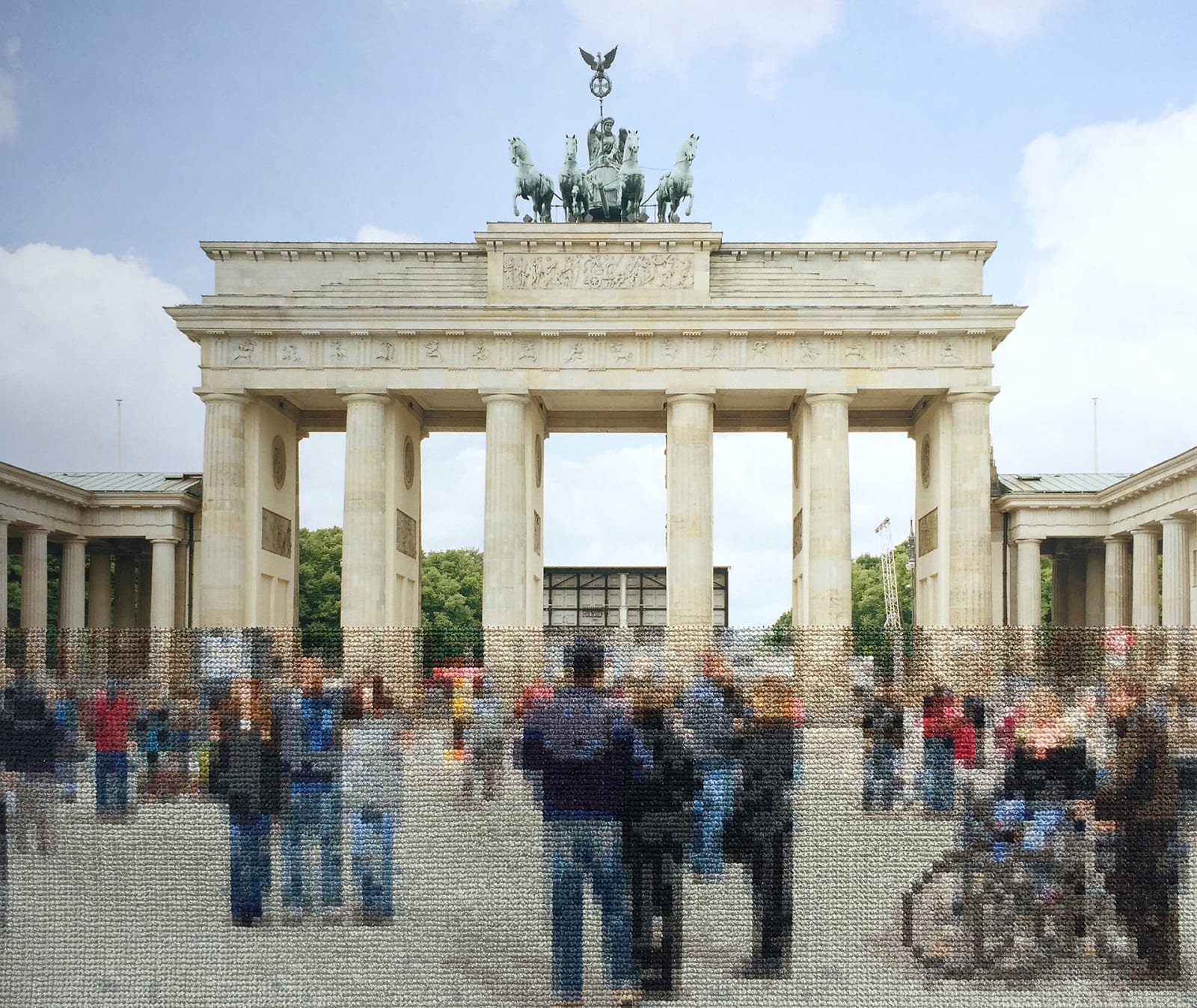Diane Meyer American, b. 1976
Brandenburg Gate, 2015
Hand-sewn archival inkjet print
14 x 16 in
35.6 x 40.6 cm
35.6 x 40.6 cm
Edition of 3 plus 2 artist's proofs
BERLIN 2012- Present These images are from a series of hand embroidered photographs following the entire 104 mile circumference of the Berlin Wall. Sections of the image have been obscured...
BERLIN 2012- Present
These images are from a series of hand embroidered photographs following the entire 104 mile circumference of the Berlin Wall. Sections of the image have been obscured by cross-stitch embroidery sewn directly into the photograph. The embroidery is made to resemble pixels and borrows the visual language of digital imaging in an analog, handmade process. The images were taken in the city center as well as in the suburbs where Meyer followed the former path of the wall through the outskirts of the city. Meyer was interested in the psychological weight of these sites and the ways in which past history remains very much in the present. In many images, the embroidered sections represent the exact scale and location of the former Wall offering a pixelated view of what lies behind. In this way, the embroidery appears as a translucent trace in the landscape of something that no longer exists but is a weight on history and memory. By having the embroidery take the form of digital pixels, the artist is making a connection between forgetting and digital file corruption. Furthermore, the artist is interested in the porous nature of memory as well as the means by which photography transforms history into nostalgic objects that obscure objective understandings of the past.
These images are from a series of hand embroidered photographs following the entire 104 mile circumference of the Berlin Wall. Sections of the image have been obscured by cross-stitch embroidery sewn directly into the photograph. The embroidery is made to resemble pixels and borrows the visual language of digital imaging in an analog, handmade process. The images were taken in the city center as well as in the suburbs where Meyer followed the former path of the wall through the outskirts of the city. Meyer was interested in the psychological weight of these sites and the ways in which past history remains very much in the present. In many images, the embroidered sections represent the exact scale and location of the former Wall offering a pixelated view of what lies behind. In this way, the embroidery appears as a translucent trace in the landscape of something that no longer exists but is a weight on history and memory. By having the embroidery take the form of digital pixels, the artist is making a connection between forgetting and digital file corruption. Furthermore, the artist is interested in the porous nature of memory as well as the means by which photography transforms history into nostalgic objects that obscure objective understandings of the past.

